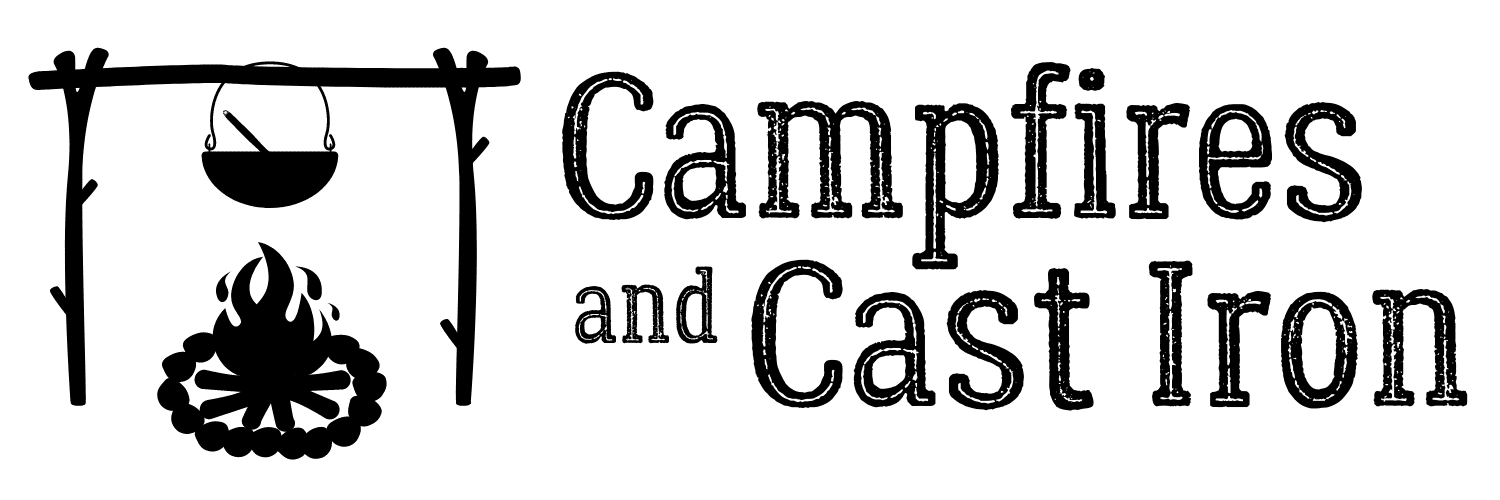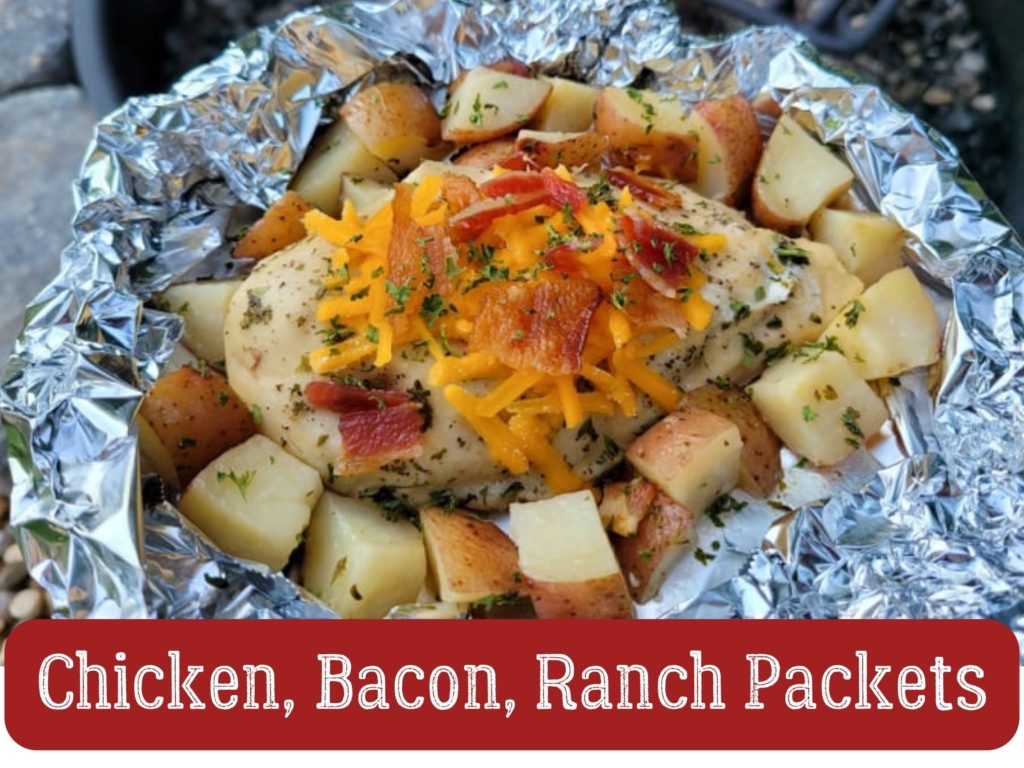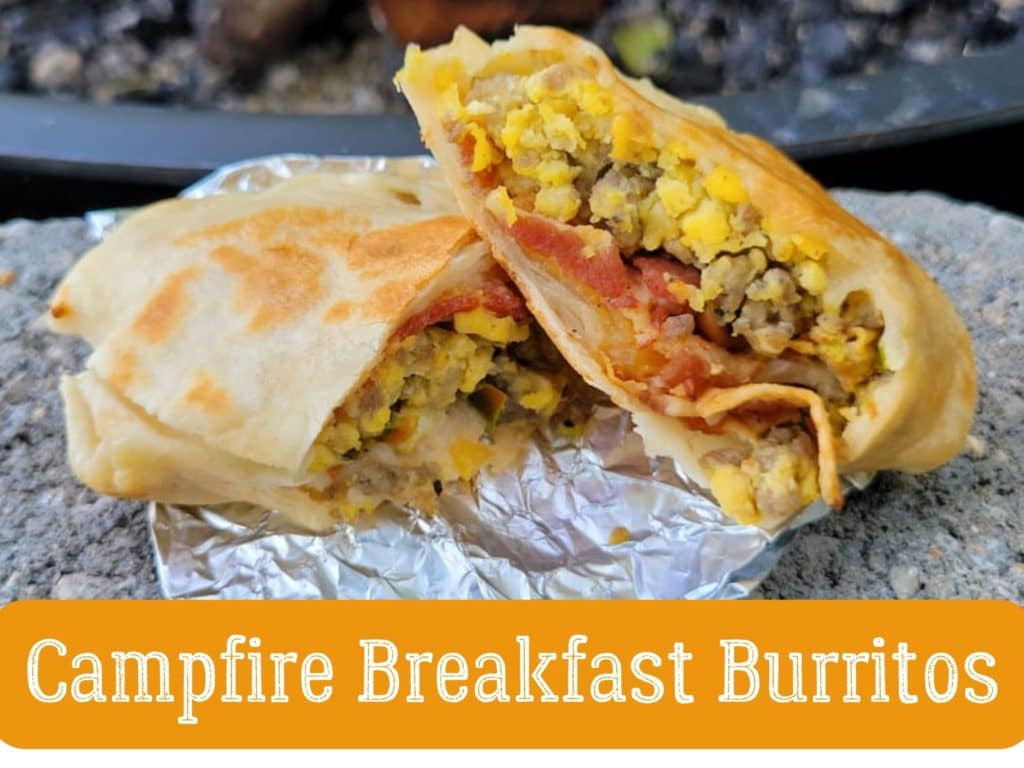Last updated on September 1st, 2022
Cooking foil packet meals is one of the easiest ways to prepare food while camping. They are easy to assemble, customizable for each person, and require almost no clean-up. Foil packet meals can even be made ahead of time, which makes cooking at the campsite faster and easier.
If you want to learn how to make camping foil packet meals but you’re not sure where to start, I’m here to help!
This guide will teach you:
- What types of foods you can cook in foil packets
- Step-by-step foil packet assembly and folding instructions
- How to prepare camping foil packets ahead of time
- How to cook foil packet meals on the campfire, grill, with charcoal, or on a camping stove
Are you ready for some campfire cooking? Let’s get started!
What Is A Foil Packet Meal
Foil packet meals, otherwise known as “hobo dinners,” are a simple way to prepare food by wrapping it in aluminum foil and cooking it in hot campfire embers. Meats, vegetables, and desserts can all be cooked in foil packets. Clean-up is quick and easy.
Why Are Foil Packet Meals Good For Camping?
Foil packet meals are one of the easiest ways to cook while camping. Simply cut your meat and vegetables into small pieces, place them on squares of aluminum foil, add butter and seasonings, then fold the foil into packets. Cook the packets on hot campfire embers, on a grill, or over charcoal.
You can even eat your meal right out of the foil packet once it’s done cooking. This eliminates the need for additional plates and bowls and makes clean-up incredibly easy.
We love foil packet meals because each person can customize their ingredients. This is especially nice when accommodating food allergies or different taste preferences.
What Types Of Food Can You Cook In Foil Packets?
It’s easy to cook breakfasts, dinners, and desserts in foil packets. From experience, I’ve found that certain foods tend to pair well and cook better together. But almost any combination of protein and vegetables can be cooked in the same packet. The key is to cut the ingredients into smaller pieces according to how long each one takes to cook so everything is done at the same time.
For example, to cook steak, potatoes, and onions together in a foil packet, you would want to cut the steak and potatoes into small, similarly-sized pieces since they take about the same amount of time to cook. The onions could be cut into larger pieces or wedges to keep them from cooking too fast.
When making foil packet meals with foods that require very different cooking times, it’s best to prepare them in separate packets. An example of this would be steak and zucchini. Make a separate foil packet just for the zucchini, as it takes much less time to cook.
These are foods I cook frequently in foil packets:
| Proteins | Vegetables | Fruits / Desserts |
| Chicken Breast or Thighs | Bell Peppers | Apples |
| Steak | Onions | Peaches |
| Salmon | Corn | Strawberries |
| Ground Beef, Chicken, or Turkey | Cherry or Grape Tomatoes | Bananas |
| Kielbasa, Andouille, or Smoked Sausage | Asparagus | Cherries |
| Ground Chorizo Sausage | Squash and Zucchini | Pineapple |
| Shaved Beef | Potatoes | Graham Crackers |
| Pork Chops or Tenderloin | Green Beans | Marshmallows |
| Cod or Tilapia | Mushrooms | Chocolate Chips |
| Shrimp | Carrots | Oats |
| Breakfast Sausage Links | Broccoli | Pecans, Walnuts, Almonds |
Supplies Needed To Make Foil Packet Meals
Camping foil packet meals are very simple to assemble and cook. However, there are a few supplies you’ll need to make sure your packets cook thoroughly and don’t tear or leak:
- Knife and cutting board for preparing ingredients.
- Heavy-duty aluminum foil is sturdy and holds up well to campfire cooking. It will help prevent your packets from getting punctures or tears when moving them around with metal tongs.
- Parchment paper is optional, but some people choose to line their foil packets with it. Parchment helps prevent food from sticking to the foil.
- Heat-resistant gloves for safely handling hot foil packets.
- Long metal tongs for moving foil packets around on the hot campfire embers and removing them after cooking.
- Instant-read meat thermometer for food safety. Campfire cooking temperatures are difficult to regulate. Always make sure food is thoroughly cooked, especially meat.
How To Assemble And Fold Camping Foil Packet Meals
Camping foil packet meals can be assembled in five easy steps:
1. Chop and Prepare Ingredients
Cut the ingredients into small, similarly-sized pieces that will cook in the same amount of time.
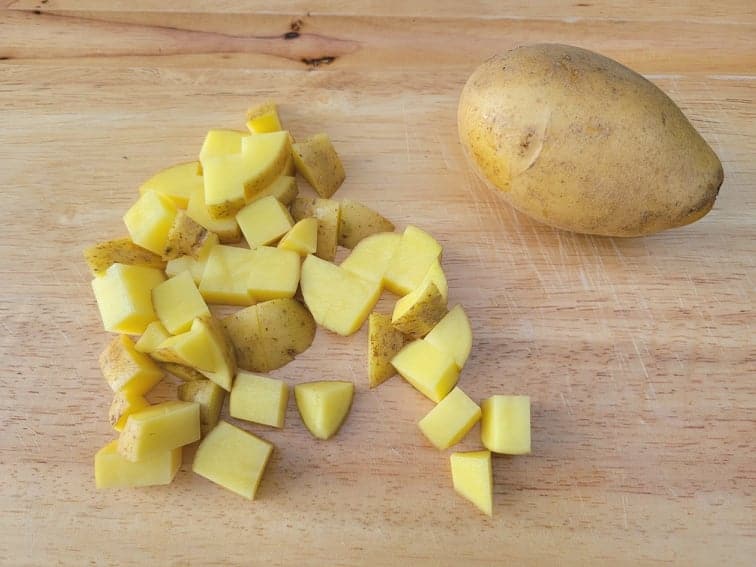
2. Cut Foil Sheets
Each foil packet will require two sheets of foil. I recommend using 15 to 20 inches of foil for each sheet. This will give you plenty of room to fold the packet and avoid leaky seams.
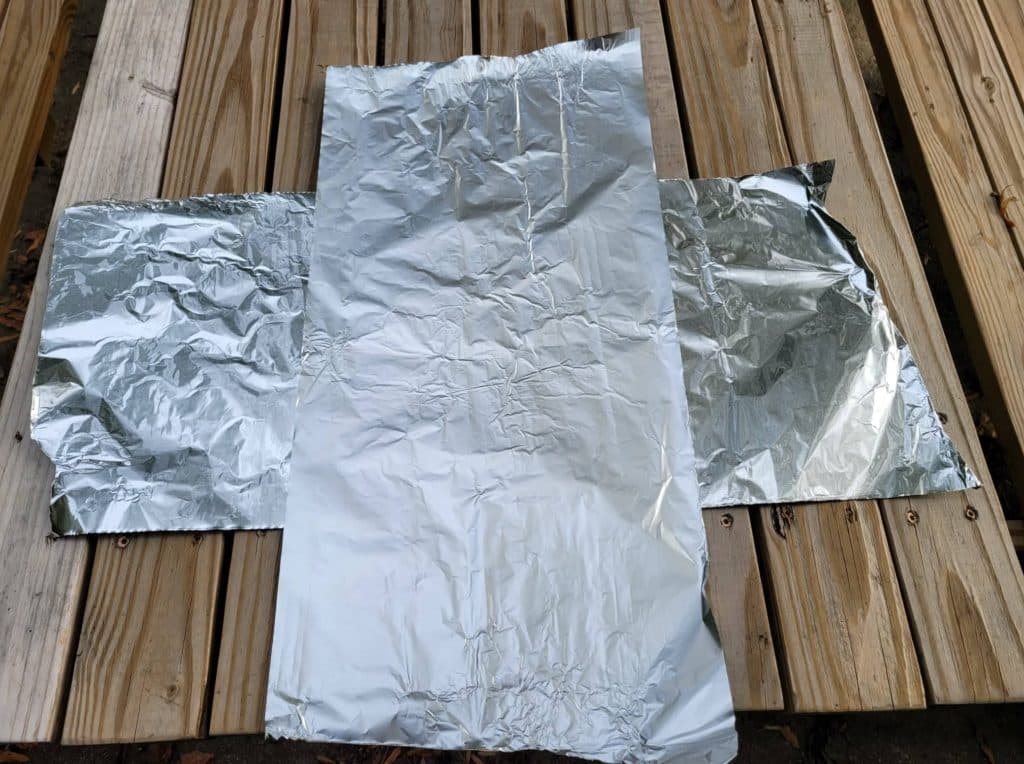
3. Place Food In The Center Of Each Foil Sheet
Evenly divide the ingredients and place them in the center of each foil sheet. Place larger foods, such as meat, on the bottom. Make sure to leave enough room to fold the sides of the foil.
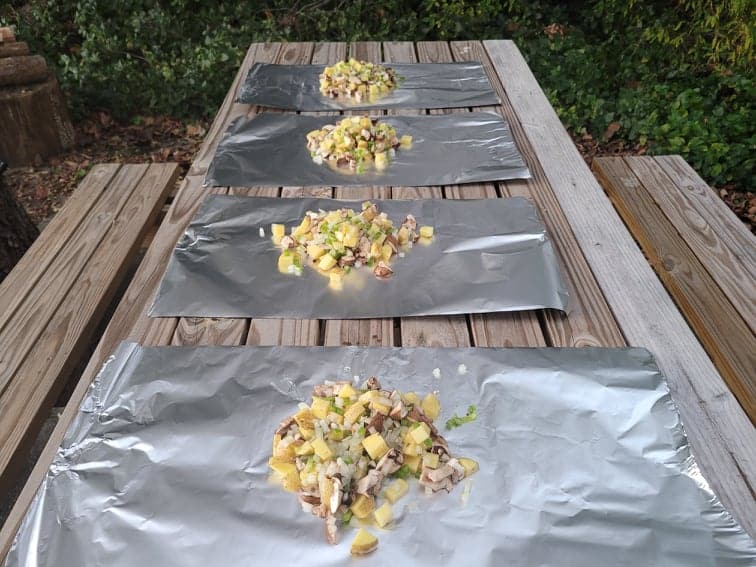
4. Top With Butter and Seasonings
Many foil packet recipes will require oil or butter in order to sautee the meats and vegetables and keep them from burning. Use about 1 TBSP of butter or oil per packet. Slice the butter into small chunks and place it evenly on top of the ingredients. Sprinkle with seasonings.
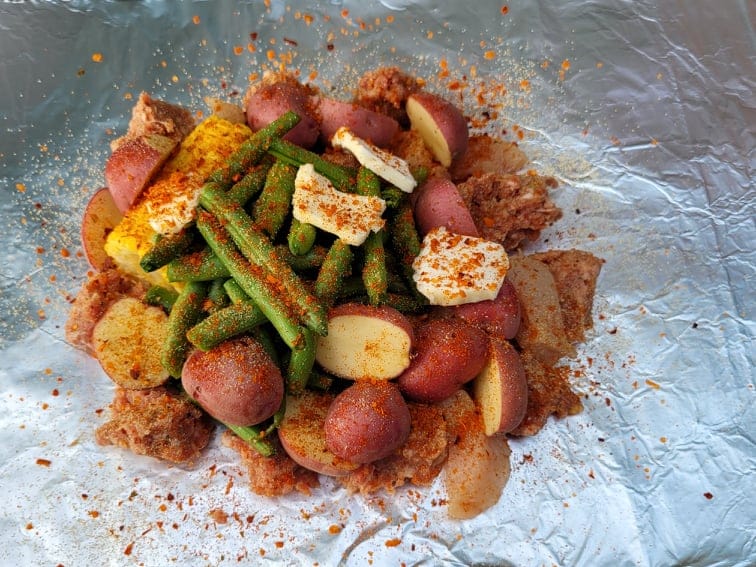
5. Fold Foil Packets
Foil packet meals are fairly forgiving and pretty hard to mess up. However, this step is really important. Folding your foil packet correctly seals in the steam, allowing your food to cook properly. It also prevents leaking and keeps campfire ashes out of the packets.
Seal each foil packet by bringing the long ends of the foil together and folding them over until the seal is close to the food. Then, roll up the sides of the foil, creating a completely sealed packet. Use the second piece of foil to wrap the packet again in the opposite direction.
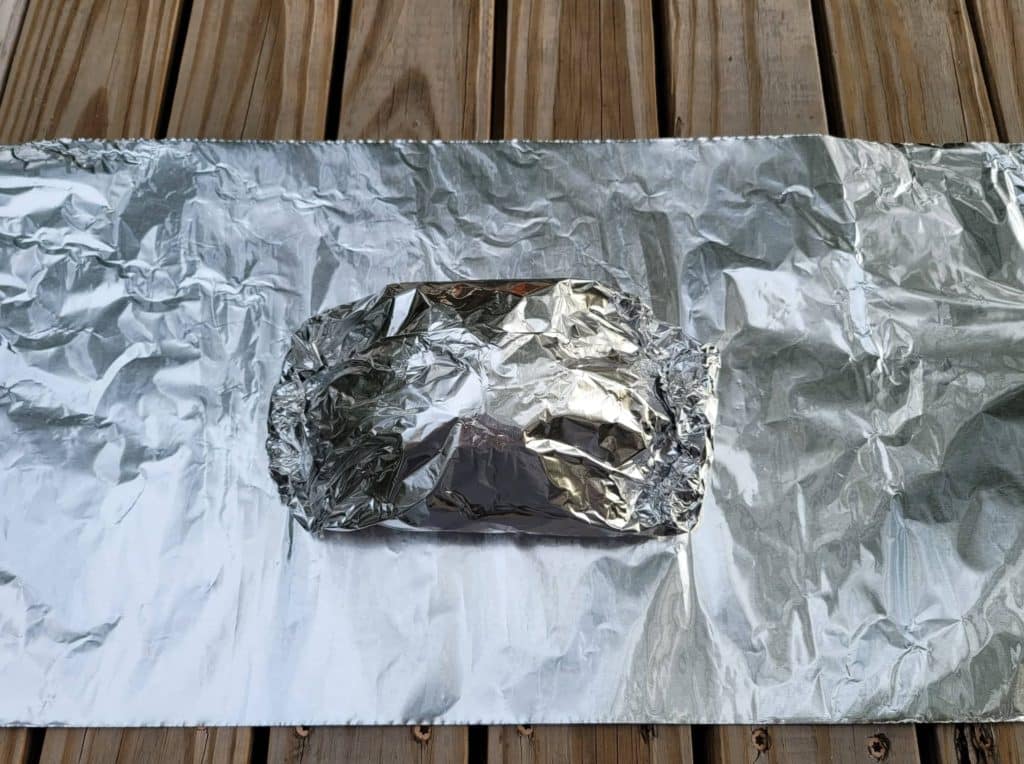
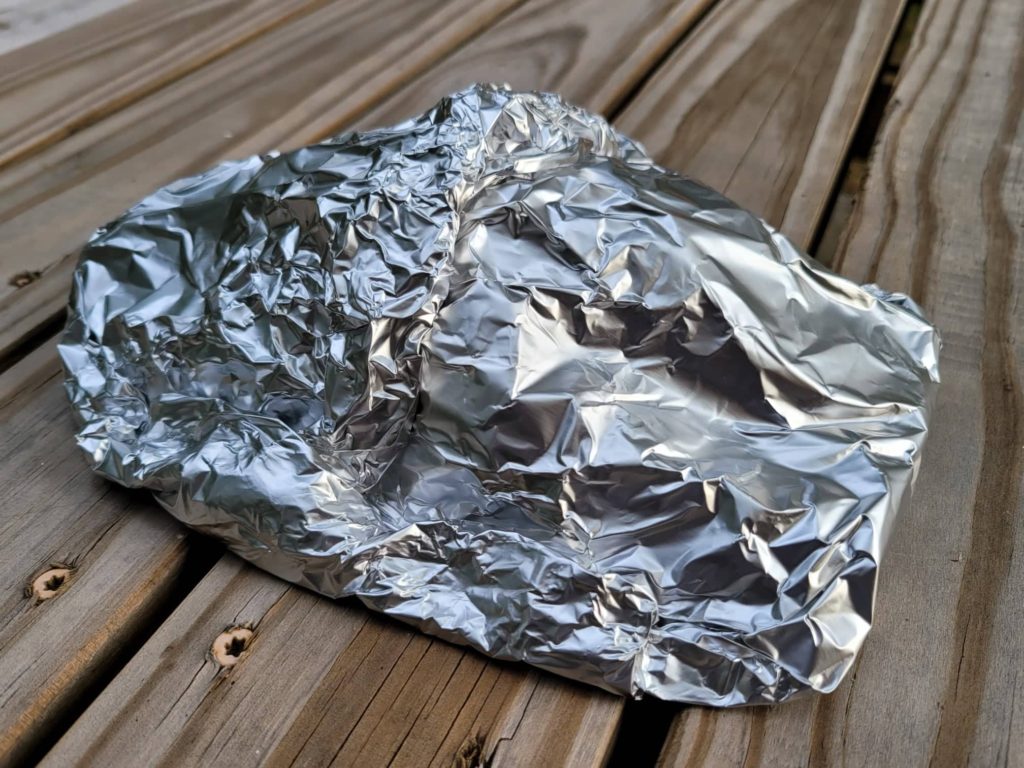
Can You Make Camping Foil Packets Ahead Of Time?
Yes! You can make camping foil packet meals ahead of time. Make sure the foil is tightly sealed to avoid leaks or place them in zip-top bags, then store the packets in the fridge or cooler for up to three days before cooking. This makes cooking dinner so much faster when you get to your campsite.
Can You Freeze Pre-Made Foil Packets?
Yes, you can freeze pre-made camping foil packet meals. Make sure the foil is sealed tightly to prevent leaks, then place them in a freezer-safe zip-top bag and remove as much air as possible. Freeze for up to two months. Thaw the packets in the cooler or fridge for 1-2 days before cooking.
How To Cook Camping Foil Packet Meals
Camping foil packet meals can be cooked in several ways: In hot campfire embers, on a charcoal or gas grill, over charcoal briquettes, or in a skillet on a camping stove. However you choose to cook them, a few principles remain the same:
1) Heat the foil packets on top of hot embers or coals, but don’t put them directly in the fire or they’ll burn.
2) Flip and rotate the packets frequently to help with even cooking.
3) Always check the internal temperature of the meat to make sure it’s fully cooked to food safety standards.
Campfire Foil Packets
When cooking foil packets on the campfire, you want to place the packets on top of hot embers, but not directly in the fire. Once the campfire has burned down somewhat, use long-handled tongs or a fire tool to drag some glowing embers a few inches away from the fire. Place each packet on top of a bed of hot embers.
You’ll know the packets are at the right cooking temperature when you hear them making a faint sizzling sound. If you hear crackling or popping, reduce the temperature by removing some embers from underneath the packets or moving them further away from the fire.
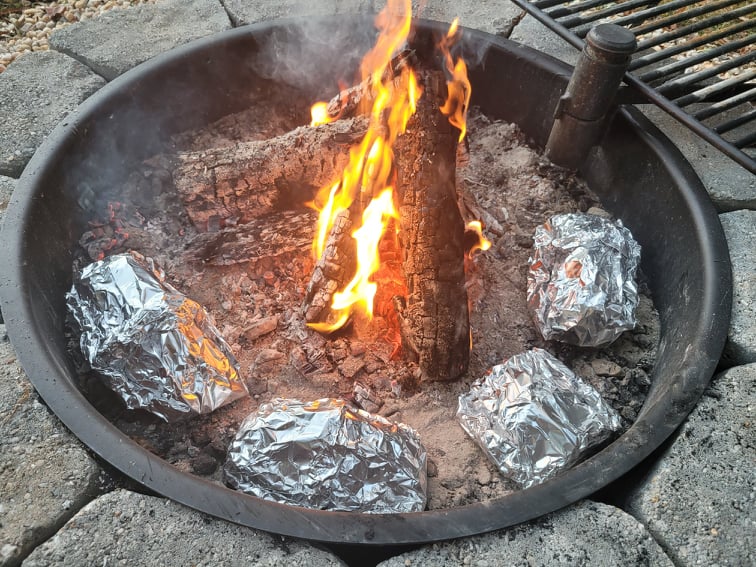
Cook the foil packet meals for approximately 20 to 45 minutes, depending on the ingredients used. More delicate foods like fish, ground meats, asparagus, zucchini, or squash may only take 20 minutes or so to cook. Heartier foods like steak, pork, chicken, potatoes, corn, or carrots may take 30 to 40 minutes. Cooking time also depends on the size of the ingredients. To reduce cooking time, cut meats and dense vegetables into bite-sized pieces.
Make sure to flip and rotate the packets every 10 minutes for even heating. Use long-handled tongs or fire gloves when handling the packets, being careful not to puncture the foil. Check meat for doneness with an instant-read thermometer. If the meat isn’t cooked thoroughly, wrap the packets back up and cook them for another 10 minutes or so.
When the packets are done, remove them from the fire and let them rest for 5-10 minutes. Open the packets carefully – watch out for hot steam!
Grilling Foil Packets
Foil packets can be cooked on either gas or charcoal grills. A grill with a lid will cook the packets faster and more evenly than an open grill, but they will cook just fine either way.
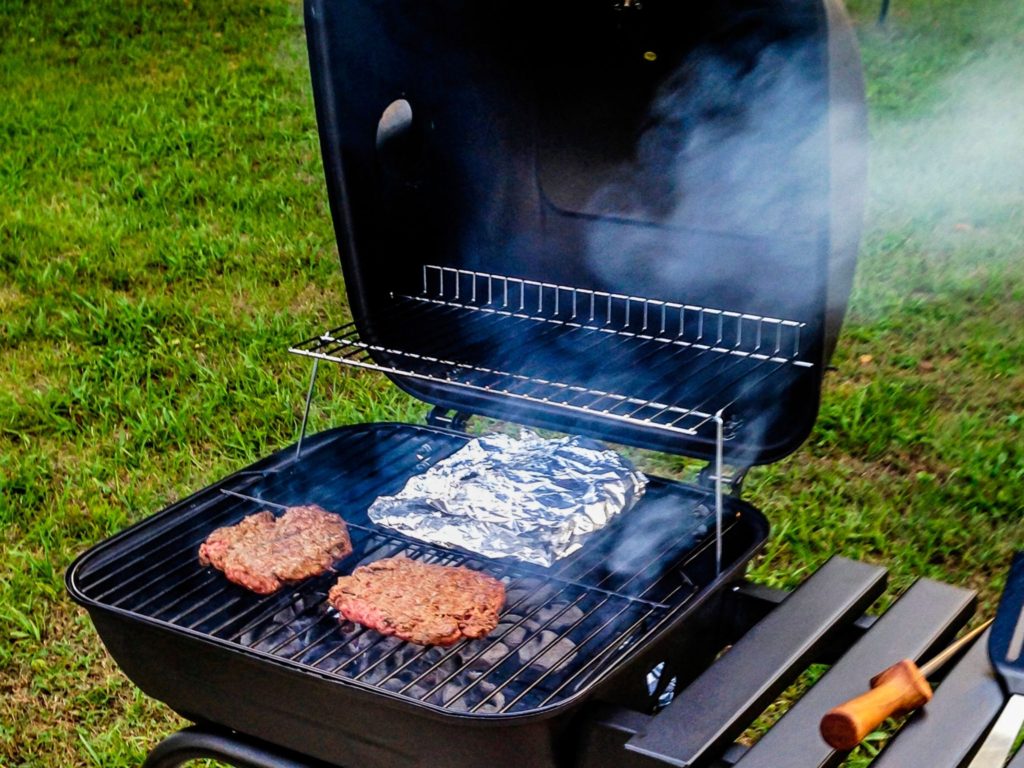
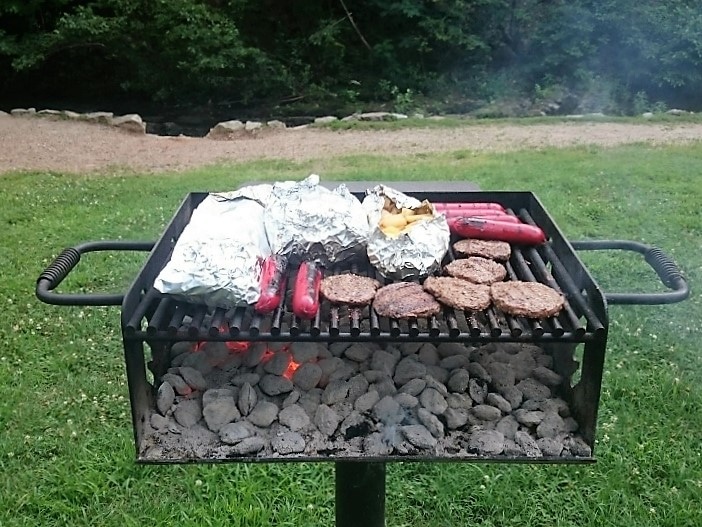
Gas Grill Instructions:
For gas grills, preheat to 400-425 degrees Fahrenheit. Place the foil packets on the grill, seam side up. Cook foil packets with the grill lid closed for 20 to 45 minutes, depending on the type and size of the ingredients. Flip packets once when they’re about halfway done cooking. Check the meat for doneness with a thermometer. When the packets are done, remove them from the grill and let them rest for 5-10 minutes before opening.
Charcoal Grill Instructions:
When using a charcoal grill, the best way to light the coals is with a charcoal chimney starter. If you’re not sure how to use a chimney starter, check out this helpful article.
When the charcoal is glowing red and covered with grey ash, it is ready to use. Place the foil packets on the grill, seam side up. Cook foil packets with the grill lid closed for 20 to 45 minutes, depending on the type and size of the ingredients. Flip packets once when they’re about halfway done cooking. Check the meat for doneness with a thermometer. When the packets are done, remove them from the grill and let them rest for 5-10 minutes before opening.
If you’re using an open charcoal grill without a lid, flip the packets once every 10 minutes for more even heating. Many campground grills also have adjustable grates. I usually lower the grate close to the charcoal to increase the cooking heat.
Charcoal Briquette Foil Packets
Start by preparing a batch of charcoal in a chimney starter. When the briquettes are glowing red and covered in grey ash, they are ready to use. Carefully use long-handled tongs to arrange the briquettes in a single layer, then place the foil packets directly on top of the coals. Additional coals can also be placed on top of the packets for more even cooking.
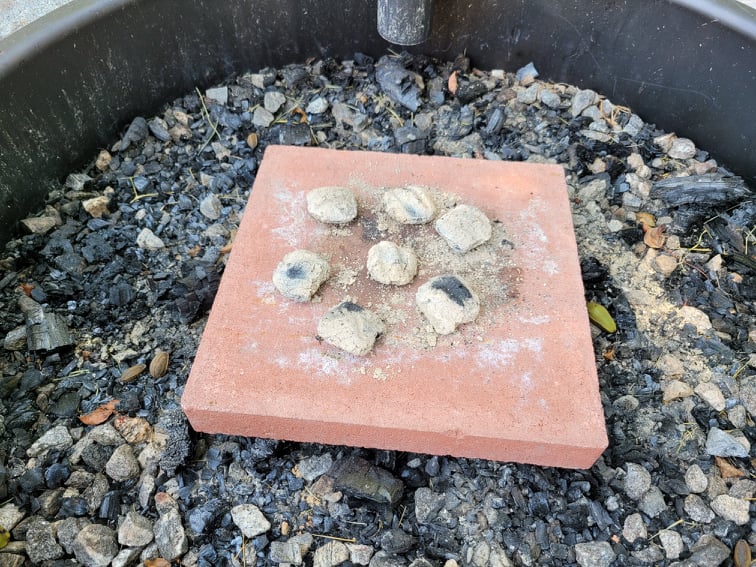
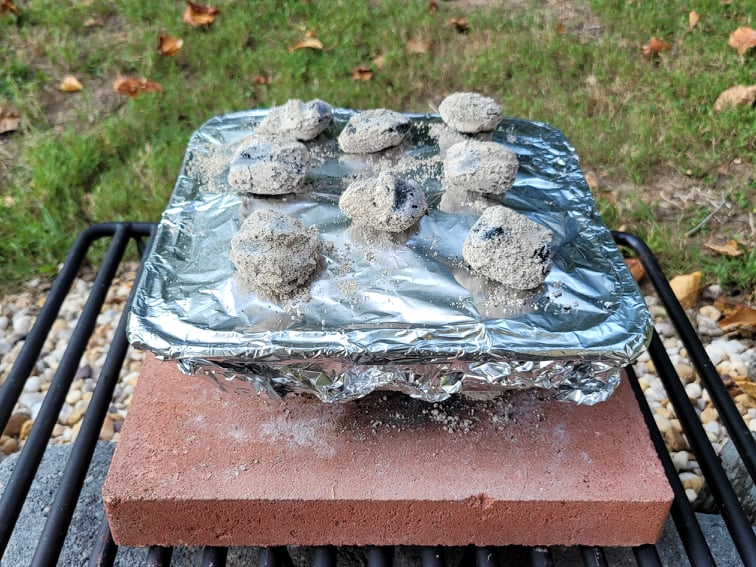
Camping Stove Foil Packets
It’s also possible to cook foil packet meals on a camping stove. The key is to place the packets in a skillet, preferably with a lid. This provides a more even heating surface, retains more heat, and avoids direct contact with the intense stove burner flame.
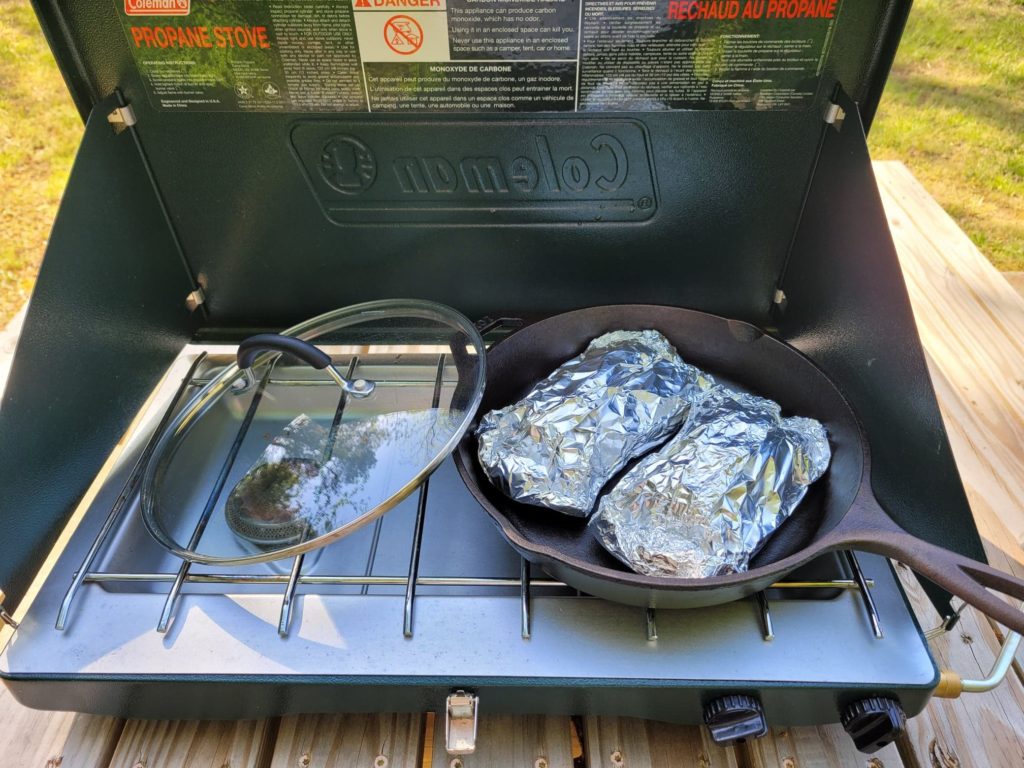
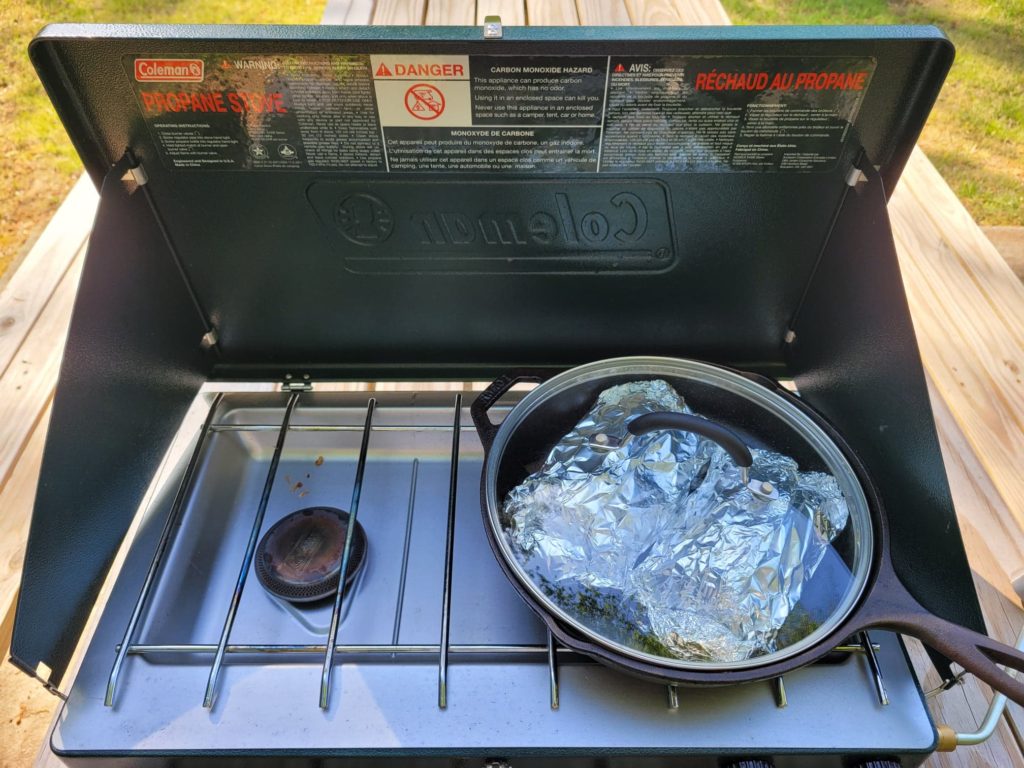
Cook the packets over medium heat for 20-45 minutes, flipping them every 10 minutes to avoid burning. You may have to turn down the heat as the packets cook, particularly if you’re using a cast iron skillet. As the skillet heats up, it will retain more heat and get really hot. Listen for the intensity of the sizzling sound in the packets and adjust the stove heat as needed.
Foil Packet Recipe Ideas
See, cooking foil packet meals while camping is a breeze! Are you ready to try it? Here are some of my favorite foil packet recipes to get you started.
Also, be sure to check the Recipes section of the blog for more delicious camping meal ideas!
This post may contain affiliate links. This means if you click on a link and make a purchase, I will receive a small commission, at no cost to you, that makes it possible for me to keep the Campfires and Cast Iron site up and running. Please see our disclosure policy for details.
